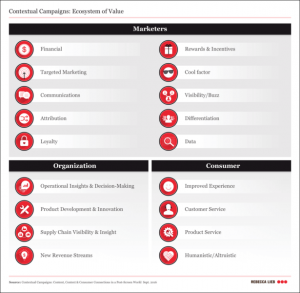
As a small business owner, you’re used to wearing all the hats. You’re the CEO, COO, CMO, and everything else rolled into one.
When you have so much to do, prioritizing tasks is difficult, if not impossible, especially when everything you do is vital to your business.
When you’re out of time and energy, what are the tasks that are usually left undone?
If you’re like a lot of business owners, the answer to that is marketing tasks: updating your blog, posting to social media, and producing new marketing materials like case studies and press releases.
The bad news is, your business can’t survive without marketing.
The good news is, there are plenty of ways you can minimize the time you spend on marketing your business, while still effectively reaching new customers and gathering leads.
In this post, we’ll delve deep into some practical, actionable tips you can put to use right away to get more marketing done in less time.
Batch Similar Tasks
You likely already know multitasking is not good for productivity.
Multiple studies have shown that trying to perform multiple tasks at once is less productive than focusing on a single task at a time. Your brain takes extra time to switch gears in between tasks and refocus on the new task, taking up more time than if you just focus on a single task. And multitasking not only slows you down, but can also lower your IQ and may actually damage your brain in the long term.
While you may know you shouldn’t be multitasking, it’s more difficult to figure out how to stop. How are you supposed to avoid multitasking when your business depends on it?
You might gain some traction postponing your marketing and posting to your blog and social media accounts haphazardly, but it’s not very strategic and impossible to optimize.
Instead, by breaking up those projects into smaller tasks and batching them together, you can be more strategic about your marketing, produce higher quality content, and — most importantly — save a ton of time. You’ll save energy and brainpower by focusing on a single marketing task for a period of time, instead of trying to multitask and squeeze in your marketing in between other tasks.
Let’s take blogging for example. Instead of quickly throwing a post together at the last minute, you can break up a batch of blog posts into tasks such as:
- Brainstorm: Set aside 10 or 20 minutes today just to brainstorm blog post ideas, coming up with a list of titles, topics, or questions you can answer for your audience. Another way to brainstorm is by collecting ideas as you go about your day using a tool like Evernote, or a document in Google Drive, saving you precious time trying to come up with ideas later on.
- Research: On another day, set aside some time to research your blog posts. This could mean Internet research for good sources to link to, or speaking with your staff or customers.
- Draft: Take some time to quickly draft each post, without allowing yourself to judge or edit your words.
- Edit: Let your drafts rest for a while, and then go back to edit them in a batch — or let another pair of eyes edit for you.
- Post: Once you’re done editing all your posts, upload them all to your blog and schedule them.
By tackling each step separately, you can write a month’s worth of blog posts in a short amount of time. This can be done with any marketing task: just start by listing each step you take in the process.
If you’re having trouble focusing on a single task — such as getting sidetracked by interesting articles as you research, or trying to edit yourself when you should be writing drafts — try using the Pomodoro Technique to defeat your habit of multitasking. The basic idea of the Pomodoro Technique is that you work for 25 minutes, and then take a break for 5 minutes. There are plenty of Pomodoro apps for iPhone or Android that can help you keep track with a timer.
The Pomodoro Technique isn’t for everyone, but whatever method you use, taking frequent short breaks can improve your concentration and productivity, and save you time in the long run.
Repurpose Everything
“Content is king,” but what if you don’t have time to create a ton of new content all the time?
When you’re busy scrambling to update your blog and social media, it’s tough to think about starting big projects like customer case studies, ebooks, podcasts, and infographics.
But one of the big secrets of successful content marketing is that you don’t have to create brand new content for every channel. Instead, you can save serious time on marketing by repurposing all your content.
Let’s take that customer case study for example. You might think you have no time to write and publish it because you’re too busy writing content for your blog and social media.
But what if you used the case study as your blog and social media content?
Instead of writing everything separately, create the case study first. Then break it up into a blog series, and grab some pull quotes to use as social media content.
You might think that repurposing content will bore your audience, but the opposite can actually be true. In reality, most of your customers aren’t following you on every single channel. Some might read your blog, while some might prefer to listen to a podcast instead. Others might like your page on Facebook, but have no interest in reading blogs. Repurposing content allows you to reach all of your fans, not just the fans on a particular channel. It can also help you to cross-promote all those channels and build your brand awareness across the web.
For those followers who are on multiple channels, it’s easy to keep your repurposed content from becoming stale by putting a slight spin on it. For example, if you publish your blog as an ebook, add some exclusive content as well. Or instead of just publishing a bare transcript of your podcast on your blog, add some links and images.
You can get started repurposing your content by:
- Producing a podcast, then transcribing it and writing a blog post based on it, or quickly creating an infographic based on it using Canva.
- Hosting a Twitter chat and creating a round-up blog post of the best tweets. Retweet them throughout the following week to fill out your social media calendar (and advertise your next chat!).
- Taking your blog post archives and quickly creating an ebook using a tool like Anthologize or PressBooks.
- Producing a video testimonial with a client, and then tweeting quotes from it, writing a blog post about it, and adding written testimonials to your website.
Plan Ahead
By squeezing in all your marketing tasks in between other projects, you might feel like you’re getting more done, but planning ahead is actually more efficient.
You can start being more strategic about your marketing tasks by first prioritizing the most important tasks. Make a list of the marketing tasks you perform, whether regularly or haphazardly. In order to track how much time you’re spending on tasks like blogging or social media, you can use a browser extension like Simple Time Track for Chrome, or RescueTime for Firefox, Chrome, or ChromeOS.
Prioritize your tasks based on which get you the most return for your time investment, and which you enjoy the most (or hate the least!). If you keep putting off certain marketing tasks, stop forcing yourself to do them: either cross them off your list for good, or outsource them (more on that in the next point).
When you make your list of tasks, be realistic about what you’ll actually accomplish, and don’t put too much on your plate.
Once you’ve decided on the tasks you’d like to prioritize, you can start filling out a simple editorial calendar to help you plan ahead.
A calendar helps you to save time by planning ahead, and will also help you create more consistent content and take advantage of seasonal events and holidays.
Here are some templates and tools you can use for planning ahead:
- Social Media Editorial Calendar Template by Hootsuite
- Editorial Calendar Essentials from the Content Marketing Institute
- WordPress Editorial Calendar plugin
Automate With Tools
Now that you know what tasks you need to tackle, you can take a look at which ones can be automated.
By finding the right tools to automate repetitive tasks, you can save a ton of time.
Some marketing tasks you might automate include:
- Email Newsletters: An RSS-to-email feature from AWeber or MailChimp will automatically email all your new blog posts to your subscribers, saving you the time of writing your email newsletter from scratch.
- Email Outreach: If you send a lot of similar emails, you can use an email plugin like YesWare to create templates, and remind yourself to follow up on outreach.
- Project Management: If you work with a team, you can save time by staying organized with a tool like Trello or Asana.
- Social Media: Use tools like Hootsuite or Buffer to schedule your social media posts to automatically be shared at optimal times for engagement, instead of wasting time on social media throughout the day. Or, use a premium all-in-one social media and blogging tool like Social Oomph or Raven Tools.
Another great tool you can use to automate tasks is IFTTT, which stands for If This Then That. It’s a powerful tool that connects apps across the web using “recipes,” or triggered automatic tasks.
For example, you could set up a recipe to automatically upload new Instagram photos to a certain Facebook page album, or to save all your new Linkedin connections to a spreadsheet in Google Drive. IFTTT even has a great collection of recipes for small business owners you can browse that includes a lot of marketing task automations.
Know When To Outsource
You might be tempted to save money by doing everything yourself, but DIYing everything actually costs more in the long run.
Remember that, as a business owner, time is your most precious resource.
But outsourcing work can be a little tricky. If not done correctly, it can actually cost you more time to manage the work than to do the work yourself.
When you outsource correctly, however, you can save a ton of time in the long run.
What you outsource will depend on your business, but consider outsourcing:
- Repetitive, time-consuming tasks that can’t be automated.
- Tasks that must be done, but that you don’t enjoy and keep putting off.
- Tasks that you could do, but which distract you from the big picture.
- Tasks that require skills that aren’t your forte.
After you decide what you’d like to outsource, start by writing down your systems and processes. Exactly how do you complete the task? Do you need it done this way, or could the process be improved?
Outsourcing means letting go of absolute control. Ask yourself what outcomes you’d be happy with, even if they aren’t exactly how you would perform the work.
For unskilled tasks, you might try a bidding marketplace like UpWork (previously Elance/oDesk) — but be aware you often get what you pay for. For more skilled work, you might try searching the web or LinkedIn, asking your network for referrals, or posting a job ad.
Once you’re ready to hire someone, start with a small project to make sure you’re a good fit working together. Don’t start with time-sensitive tasks; give yourself enough time to recover and fix things if something goes wrong.
Ready To Save Time On Your Business Marketing?
Are you already using some of the tips and tools listed above, or are there other tools you can recommend that save you time on marketing? Which of these will you put into practice today?
(278)









